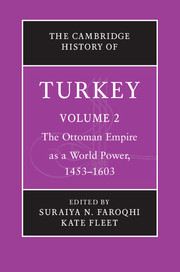1 - Introduction
Published online by Cambridge University Press: 05 July 2013
Summary
Of the Ottoman Empire we can say what Friedrich Schiller (1759–1805) once wrote about the seventeenth-century military commander and entrepreneur Albrecht von Wallenstein (in Czech, Albrecht Václav Eusebius z Valdštejna, 1583–1634). According to Schiller’s verse, the favour and hate of [conflicting] parties had caused confusion, producing a highly variable image of Wallenstein’s character in history. Put differently, it was the diverging perspectives of the beholders that gave rise to this instability. Admittedly, being a poet, Schiller made his point far more concisely than the present author is able to do.
In certain traditions of historiography in the Balkans and elsewhere as well, denigrating the Ottoman Empire and making it responsible for all manner of “backwardness” is still widespread, although challenges to this view have been mounting during the last 30 years. On the other hand, romanticising the images of Mehmed the Conqueror (r. 1451–81) or Süleyman the Magnificent (r. 1520–66) is also quite a popular enterprise: witness the statue of Mehmed II in downtown Istanbul – a new one is in the planning stage – and the double monument to Zrínyi Miklós and Sultan Süleyman in a park of Szigetvar, Hungary.
- Type
- Chapter
- Information
- The Cambridge History of Turkey , pp. 1 - 16Publisher: Cambridge University PressPrint publication year: 2012
References
- 1
- Cited by



